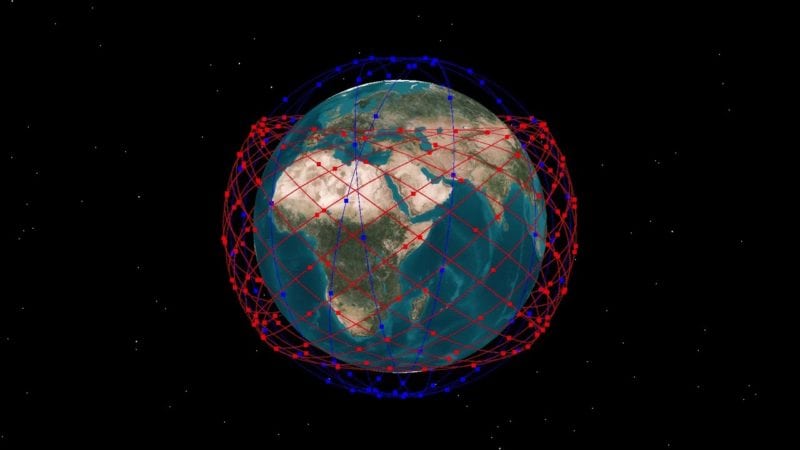Latest News

Global Eagle and Telesat prime LEO for maritime and aviation to bridge mobility gaps. Photo Credit: Telesat
In mid-May, news surfaced that In-Flight Entertainment and Connectivity (IFEC) provider Global Eagle will facilitate Telesat in designing and testing its Low Earth Orbit (LEO) constellation. This tie-up, which effectively made Global Eagle the first IFEC player to announce a collaboration with Telesat, followed a comprehensive review of planned Non-Geostationary-Orbit (NGSO) constellations. Upon determining that LEO’s global connections, including polar region coverage and the traversing air routes, would afford a better passenger experience owing to the satellites’ very low latency compared to Geostationary Earth Orbit (GEO), the two companies agreed to use Telesat’s recently launched Phase 1 LEO demonstration satellite to test connectivity for aviation and maritime users.
The Canada-based operator is designing a constellation of 117 satellites for broadband connectivity, and launched Phase 1 LEO in January on an Indian Polar Satellite Launch Vehicle. Significantly for Global Eagle, this collaboration includes user terminal development, and the in-flight and at-sea testing of LEO-compatible hardware. Global Eagle will test its newly developed mechanically steered Ka-band antenna, which is compatible with current installation architecture and supplemental type certificates. However, the company notes that aviation antennas will evolve over the next five years, and plans Ka, Ku and next-generation antennas in service. Because the challenge associated with LEO networks lies in the inter-satellite links with the ground segment, Global Eagle having influence over the development of LEO systems’ ground segment architecture may prove crucial.
“In the next five years, we will be working diligently on building out the product and service offerings to take full advantage of the unique performance and capability that LEO constellations offer to our IFC, maritime and land customers,” says Glenn Latta, Chief Operating Officer (COO) of connectivity for Global Eagle. “At the tail end of that five-year period, we expect to be delivering our customers a hybrid network, mixing GEO and LEO constellations with Global Eagle’s leading network management expertise to offer our customers right path, right performance services based on end-user need.”
Using Phase 1 LEO, the parties will focus on airline and large cruise ship applications in polar and high-latitude regions, and passenger use-cases globally that leverage sub-50 millisecond latency for data-intensive applications. Global Eagle is an existing customer of Telesat GEO satellites, providing high-performing wireless broadband to its airline and cruise passengers. Due to Telesat’s open architecture, Global Eagle’s customers are provided an easy upgrade path to add LEO capacity to existing GEO systems. This means that Telesat LEO would seamlessly fill the gaps in the coverage map of Ka-band satellites.
For Telesat, this tie-up offers benefits through partnering with an established provider of satellite broadband and connected entertainment services for mobility markets, “a key sector for Telesat.” While the two companies have not disclosed whether this cooperation will see Global Eagle leasing capacity on Telesat LEO, the collaboration is validation of the LEO system and the potential it has for aeronautical and maritime verticals. In preparation for its forthcoming constellation, the global service launch of which is targeted for 2022, Telesat has also signed up maritime players OmniAccess and Optus to test its prototype satellite.
“Mobility has long been a key sector for Telesat and our LEO system is going to be a game changer for mobility markets. Companies like Global Eagle and OmniAccess have highly capable technical teams who know the requirements of their end customers. These companies have conducted their own in-depth reviews of planned NGSO constellations and have concluded that Telesat’s LEO system has the capability to deliver next-generation services that will allow them to bring greater value to their customers and continue growing their businesses,” says Erwin Hudson, vice president of Telesat LEO, the man responsible for directing the development and implementation of Telesat’s planned LEO satellite constellation.
Because Telesat LEO can concentrate more capacity where it’s most needed, such as sea ports, airports, and high density air and sea routes, it is best to deliver a consistent, responsive and scalable customer experience for airlines, cruise ships and other mobility markets, says Hudson, noting that with the booming connectivity trends of both aviation and maritime, Telesat LEO won’t arrive a minute too soon.
“The global commercial airline industry is booming with over 4 billion passengers carried in 2017. Providing high quality broadband at 35,000 feet is becoming a key differentiator for airlines. On the maritime side, in the cruise and yacht segments, fiber quality connectivity is becoming a customer requirement. In the merchant vessel, and offshore oil and gas segments, crew welfare and improvements in operational efficiency drive requirements for broadband services,” says Hudson.
While Telesat’s LEO system can meet the capacity and performance requirements of fast growing mobile markets, resulting in mobile service providers showing interest in collaborating in the development of the system, customers in other markets are also showing strong interest in low-latency broadband services that LEO systems can deliver, notes Hudson.
“Telcos around the world are looking for advanced LEO systems to cost effectively backhaul 4G and 5G services, extending their networks into more remote locations. Governments are looking to connect underserved areas with affordable high-speed broadband. Military customers see the potential to integrate satellite broadband connectivity into their operations, including ground, air, sea and space applications. Our LEO solution will open up many opportunities across both traditional satellite markets as well as new markets that require cost-effective, fiber-like capacity that only a LEO satellite constellation can provide,” says Hudson.
Get the latest Via Satellite news!
Subscribe Now